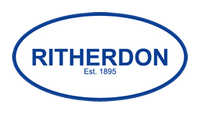Why Stainless Steel? & Which Grade Do I Need For My Location?
Applications Electrical Enclosures FAQs Material Meter Box Repair
Ritherdon have been manufacturing various enclosures probably since the 1940's and, up until the 1990's, had only used stainless steel for special circumstances where the extra cost could be justified. However, in the late 1990's, when the cheaper, ferritic stainless known as 3Cr12 was specified as EN1.4003 in Europe, Ritherdon saw its potential as a cost effective and superior material for external enclosures.
Traditionally, in the street enclosure market, galvanised mild steel had been used (particularly for feeder pillars): the zinc coating providing a level of protection for the mild steel. More precise manufacturing is required to produce stainless steel enclosures as they are made from thinner gauge metal. However, Ritherdon had already established this level of manufacturing precision and saw the opportunity to provide a better product to the industry.
The improved manufacturing efficiencies that followed meant that Ritherdon could also begin to supply cost effective feeder pillars and cabinets in ‘higher’ grades of stainless steel, such as 304 and 316. These are usually used when a natural (unpainted) enclosure is required or for more corrosive environments.
All Ritherdon Pillars, Cabinets and most Meter Boxes & Meter Box Repairs* are made from stainless steel for added strength, lighter and longer lasting.
The three most commonly used grades used in Ritherdon & Co street enclosure & housing products, in approximate order of increasing corrosion resistance, are 4003, 304, 316.
|
4003 |
EN1.4003 |
3Cr12 |
utility grade |
|
304 |
EN1.4301 |
A2 (for fasteners) |
|
|
316 |
EN1.4436 |
A4 (for fasteners) |
marine grade |
4003 Grade is powder coated and used in typical urban and rural environments inland. Most of our Meter Boxes & Meter Box Repairs* are made from this material.
While 4003 is highly resistant to atmospheric corrosion, it is not recommended for use as a decorative stainless steel (e.g. unpainted and polished). This is because in more aggressively corrosive environments it can discolour, producing a tarnished look to its surface.
To avoid this staining in more corrosive environments, 4003 grade stainless steel products are powder coated for external use. For a natural finish we would use a 304 Grade material.
304 Grade natural & powder coated is also used in typical urban and rural environments inland.
Unlike 4003, 304 stainless steel does not have a tendency to form a surface patina. This means that it can be used, uncoated, for external surfaces, some staining can occur, in certain certain situations such as coastal locations within ½ mile/500 mt of the coastline which we recommend a power coated finish. Exceptions being on the Blackpool coastline where we have found a higher corrosion rate and recommend 316 Grade Powder Coated.
316 Grade natural & powder coated tend to be used for marine and offshore locations. Grade 316 stainless steel is austenitic like 304 and shares many of its properties but it is generally even more resistant to corrosion. Trials indicated that 316 stainless steel has 6,700 times the resistance of mild steel across a range of environments, being >10,000 times as resistant in very aggressive environments such as industrial marine.
This makes 316 suitable for unpainted enclosures in very corrosive atmospheres such as on the coast where they will be very resistant even to staining. Though powder coated will give the highest protection possible.
*R7 Slimline, R7 Extra Deep, & R20 Meter Box Repairs & R3, R5 & R6 Meter Boxes are made from Zinc Plated Steel and power coated.
Gary Ravetta June 2017
← Older Post Newer Post →
